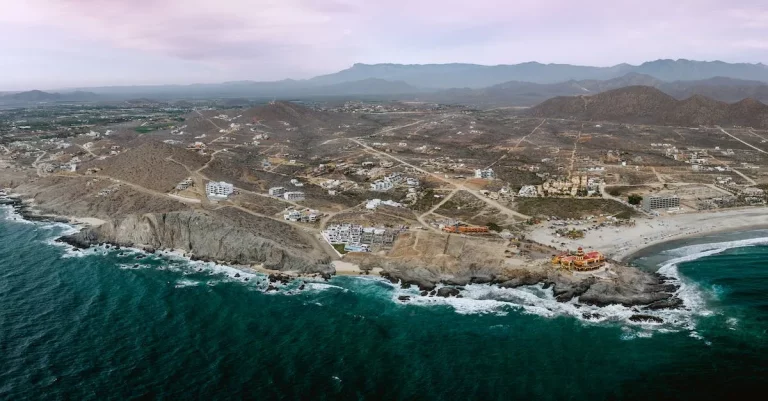Is Phoenix Hotter Than Las Vegas? A Detailed Climate Comparison
With their desert climates and triple-digit summer heat, Phoenix and Las Vegas are two of the hottest cities in the American Southwest. But when it comes to average temperatures, which city truly sizzles the most? If you’re short on time, here’s a quick answer: Yes, Phoenix is generally hotter than Las Vegas throughout the year.
In this comprehensive article, we will analyze the climate data of both cities including average highs and lows, record temperatures, humidity, and more. We’ll examine the topography, elevation, and weather patterns that shape the heat profiles of these renowned desert cities. Let’s take a close look at how Phoenix and Las Vegas compare when it comes to their intensely hot summers and mild winters.
Phoenix’s Climate Profile
Location Details
Phoenix, the capital city of Arizona, is located in the Sonoran Desert. It is situated in the southwestern part of the United States, surrounded by beautiful desert landscapes and mountain ranges. Its geographical coordinates are approximately 33.4484° N latitude and 112.0740° W longitude.
Average Temperatures
Phoenix is known for its scorching summers and mild winters. The city experiences a subtropical desert climate, characterized by extremely hot and dry summers, and warm winters. The average annual temperature in Phoenix is around 75°F (24°C).
During the summer months, temperatures can soar to over 100°F (38°C) on a regular basis. In fact, Phoenix holds the record for having the most days with temperatures of 100°F or higher in a year.
Despite the intense heat, Phoenix benefits from low humidity levels, which can make the extreme temperatures more bearable. The city also boasts approximately 300 sunny days per year, making it a popular destination for sun lovers and outdoor enthusiasts.
Extreme Heat
Phoenix is often referred to as one of the hottest cities in the United States. The combination of high temperatures and prolonged heatwaves can pose health risks, particularly for vulnerable populations such as the elderly and those with respiratory conditions.
To combat the extreme heat, the city has implemented various measures, including cooling centers, public pools, and awareness campaigns to educate residents on heat-related safety precautions.
It’s worth noting that while Phoenix is known for its hot climate, it is not the only city in the region to experience scorching temperatures. Las Vegas, another popular desert city, also faces similar heat challenges.
However, Phoenix generally experiences slightly higher temperatures compared to Las Vegas, making it one of the hottest cities in the country.
For more information on Phoenix’s climate profile, you can visit the Weather.com website, which provides detailed weather forecasts and historical climate data for the city.
Las Vegas’ Climate Profile
Location Details
Las Vegas, located in the Mojave Desert in Nevada, is known for its hot and dry climate. Situated at an elevation of around 2,000 feet, it is surrounded by mountains which help create a unique microclimate.
The city experiences very little rainfall throughout the year, with most of it occurring during the winter months. Its desert location also means that it is prone to sudden and extreme weather changes.
Average Temperatures
Las Vegas is infamous for its scorching summer temperatures. The average high temperature in July, the hottest month, reaches well above 100 degrees Fahrenheit (38 degrees Celsius). On the other hand, winters in Las Vegas are relatively mild, with average high temperatures ranging from the mid-50s to low 60s (around 12-16 degrees Celsius).
It’s important to note that Las Vegas experiences significant temperature fluctuations between day and night due to its desert environment. It is not uncommon for the temperature to drop by 30 degrees or more when the sun sets, resulting in cool evenings and early mornings.
Extreme Heat
Las Vegas is no stranger to extreme heatwaves. In fact, it holds several records for high temperatures. On June 29, 2013, the city experienced its highest recorded temperature of 117 degrees Fahrenheit (47 degrees Celsius).
These extreme temperatures can pose health risks, especially for vulnerable populations such as the elderly and young children.
To cope with the extreme heat, Las Vegas has implemented various measures. Many buildings and public spaces are equipped with air conditioning, and residents and visitors are advised to stay hydrated, wear lightweight and breathable clothing, and avoid excessive outdoor activities during the hottest parts of the day.
If you’re planning a visit to Las Vegas, it’s essential to take the climate into consideration and plan accordingly. Be prepared for the intense heat and make sure to stay cool and hydrated to fully enjoy your time in the city.
Comparing the Temperature Data
Average Highs – Phoenix Hotter
When it comes to average high temperatures, Phoenix takes the crown as the hotter city compared to Las Vegas. With scorching summers and mild winters, Phoenix boasts an average high of around 100 degrees Fahrenheit (38 degrees Celsius) during the summer months.
This is slightly higher than Las Vegas, which sees average highs in the mid-90s (around 35 degrees Celsius). The intense heat in Phoenix can be attributed to its location in the Sonoran Desert, where the lack of vegetation and the abundance of concrete contribute to the urban heat island effect.
Average Lows – Phoenix Milder
While Phoenix may be hotter in terms of average highs, it also enjoys milder average low temperatures compared to Las Vegas. During winter nights, Phoenix experiences lows in the mid-40s to mid-50s (around 7 to 12 degrees Celsius).
In contrast, Las Vegas can dip down to the mid-30s (around 1 to 3 degrees Celsius). This difference can be attributed to the higher elevation and cooler desert nights in Phoenix.
Record Temps – Las Vegas Hotter
When it comes to record-breaking temperatures, Las Vegas takes the lead in being the hotter city. While both cities experience extreme heat, Las Vegas has seen higher temperatures historically. In 1937, Las Vegas recorded its highest temperature of 117 degrees Fahrenheit (47 degrees Celsius), while Phoenix reached a maximum of 122 degrees Fahrenheit (50 degrees Celsius) in 1990.
These scorching temperatures remind us of the blistering heat that these desert cities can experience.
Precipitation – Las Vegas Drier
When it comes to rainfall, Las Vegas is known for its arid climate. The city receives an average of just 4.2 inches (10.7 cm) of rainfall annually, making it one of the driest cities in the United States.
Phoenix, on the other hand, receives slightly more precipitation with an average of 8.3 inches (21.1 cm) per year. However, both cities experience very little rainfall and rely heavily on irrigation and water management systems to support their populations.
Elevation & Topography – Impacts on Heat
The difference in elevation and topography between Phoenix and Las Vegas also plays a role in their respective temperatures. Phoenix sits at an elevation of around 1,100 feet (335 meters) above sea level, while Las Vegas is situated at approximately 2,000 feet (610 meters) above sea level.
The higher elevation in Las Vegas contributes to slightly cooler temperatures compared to Phoenix. Additionally, the surrounding mountain ranges in both cities can affect temperature patterns, with the Spring Mountains providing some relief to Las Vegas from the intense desert heat.
Heat Waves, Monsoons and Dry Heat
Phoenix Heat Waves
Phoenix, Arizona is known for its scorching heat, with summer temperatures often exceeding 100 degrees Fahrenheit. The city experiences frequent heat waves, which are prolonged periods of excessively hot weather.
These heat waves can last for several days or even weeks, pushing the temperature well beyond the normal range. In fact, Phoenix holds the record for the highest number of days with temperatures above 100 degrees Fahrenheit in a year.
During a heat wave, Phoenix residents and visitors are advised to take precautions to stay safe and cool. This includes staying hydrated, seeking shade, and limiting outdoor activities during the hottest parts of the day.
Air conditioning is a necessity in this desert city, and many local businesses and public spaces offer refuge from the sweltering temperatures.
Las Vegas Heat Waves
Las Vegas, Nevada is another city notorious for its extreme heat. Like Phoenix, it experiences frequent heat waves during the summer months. However, while the average temperatures in Las Vegas are slightly lower than those in Phoenix, the city still sees its fair share of scorching hot days.
During a heat wave in Las Vegas, it is important for residents and visitors to take similar precautions as those in Phoenix. Staying hydrated and seeking air-conditioned spaces are essential. Many hotels and casinos in Las Vegas have extensive air conditioning systems, providing relief from the intense heat for both locals and tourists.
Monsoon Season Cooling
Both Phoenix and Las Vegas experience a monsoon season, which brings relief from the intense heat. The monsoon season typically occurs in the summer months and is characterized by heavy rainfall, thunderstorms, and high humidity.
During this time, the temperatures in both cities can drop significantly as the rain cools the air. The monsoon season also brings much-needed moisture to the desert landscapes, rejuvenating the flora and fauna.
However, it is important to note that monsoon storms can also bring flash floods and strong winds, so it is crucial to stay informed and take necessary precautions.
The ‘Dry Heat’ Debate
When discussing the heat in Phoenix and Las Vegas, the term “dry heat” often comes up. Both cities are known for their low humidity levels, which can make the high temperatures feel more bearable. However, the notion of “dry heat” being more comfortable is subjective and varies from person to person.
Some people find the dry heat of the desert more tolerable, as the lack of humidity allows sweat to evaporate quickly, providing a natural cooling effect. Others may find the dryness uncomfortable, as it can lead to dry skin, dehydration, and respiratory issues.
Ultimately, whether one prefers dry heat or not is a matter of personal preference.
Sources:
– National Weather Service Phoenix: https://www.weather.gov/psr/
– National Weather Service Las Vegas: https://www.weather.gov/vef/
Best Times to Visit Each Desert City
Phoenix – Spring and Fall
If you’re planning a trip to Phoenix, the best times to visit are during the spring and fall seasons. In spring, which spans from March to May, the weather is typically warm and pleasant with temperatures ranging from the mid-60s to the mid-80s Fahrenheit (18-29 degrees Celsius).
The desert landscape comes alive with colorful wildflowers and cacti in bloom, creating a picturesque backdrop for outdoor activities.
The fall season, from September to November, is another great time to explore Phoenix. The scorching heat of summer starts to fade, and temperatures become more bearable, ranging from the mid-70s to the low 90s Fahrenheit (24-32 degrees Celsius).
It’s a perfect time to hike through the desert trails, visit botanical gardens, or enjoy outdoor dining.
According to the Weather Channel, both spring and fall offer the lowest average rainfall and the most comfortable temperatures in Phoenix. So, if you want to avoid extreme heat or heavy rain, plan your visit during these seasons.
Las Vegas – Anytime but Summer
Las Vegas is known for its vibrant nightlife, entertainment, and casinos. While the city experiences scorching hot summers, there are still plenty of great times to visit throughout the year. The best time to visit Las Vegas is during the spring, fall, and winter seasons, as they offer more pleasant weather conditions.
Spring, from March to May, brings mild temperatures ranging from the mid-60s to the mid-80s Fahrenheit (18-29 degrees Celsius). It’s a great time to explore the famous Las Vegas Strip, take in a show, or relax by the pool.
Fall, from September to November, is another favorable time to visit Las Vegas. The temperatures start to cool down, ranging from the mid-70s to the low 90s Fahrenheit (24-32 degrees Celsius). It’s a perfect time to enjoy outdoor activities, such as golfing or hiking, without the scorching heat of summer.
Winter, from December to February, offers cooler temperatures ranging from the mid-50s to the low 60s Fahrenheit (10-15 degrees Celsius). While it may be too cold for swimming, it’s a great time to explore indoor attractions, enjoy holiday festivities, or try your luck at the casinos.
According to Current Results, Las Vegas experiences extremely hot summers, with temperatures often exceeding 100 degrees Fahrenheit (38 degrees Celsius). Therefore, it’s best to avoid visiting during the summer months if you’re not a fan of intense heat.
Conclusion
While both cities see extremely hot summers, the climate data shows Phoenix narrowly edges out Las Vegas when it comes to average highs and all-around heat. However, Las Vegas holds some hotter individual record temperatures. The climate profiles of each city can help travelers determine the best times to visit and understand how topography and weather patterns create these hot desert oases.








